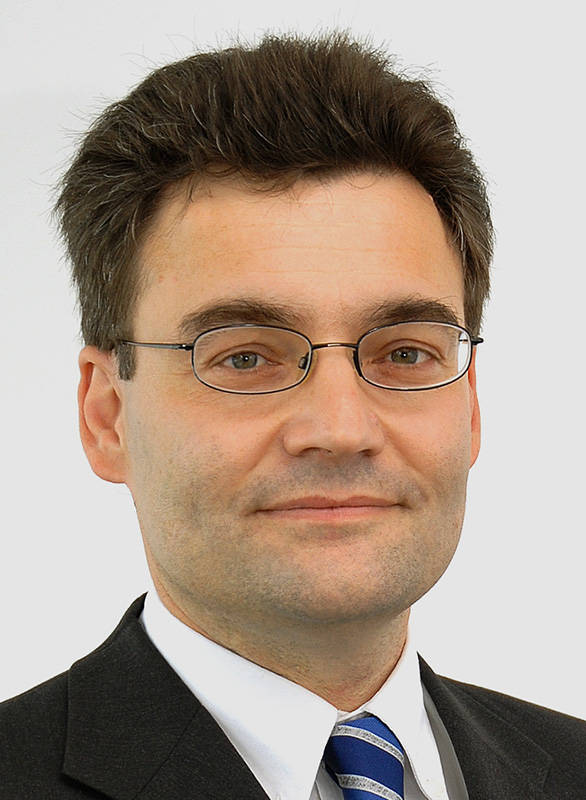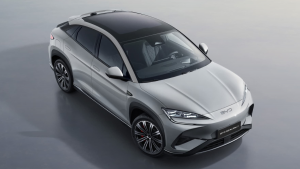Interview: Juergen Moessinger, head of business in Bosch Engineering talks about Autosar project
Juergen Moessinger, head of business, Bosch Engineering and Business Unit tells OVERDRIVE about the AUTOSAR project. AUTOSAR stands for Automotive Open System Architecture and is a system jointly developed by tool developers, automobile manufacturers and suppliers to provide a common platform for vehicle software.

1. What is AUTOSAR, when did it start?
AUTOSAR is alliance of OEM manufacturers, Tier 1 suppliers as well as tool and service providers. It started in 2003 based on initial discussions of BMW, Bosch, DaimlerChrysler and Volkswagen. Today AUTOSAR has 9 Core Members (BMW, Bosch, Continental, Daimler, Ford, GM, PSA, Toyota, Volkswagen). Many companies contribute to AUTOSAR as Premium, Associated or Development members.
2. What is the objective behind AUTOSAR?
The increasing amount of SW and Control units within a car leads to an increased complexity of the E/E architecture.
In order to control the complexity standardization in the embedded SW area was necessary. AUTOSAR describes a layered architecture, methodology, application interfaces and most common parts of the basic SW. It enables the OEM and Tier1 to keep pace in development of new functions with affordable cost.
3. How did it start as an industry-wide initiative? Who are the partners? What is the scope of the partnership and this technology?
The AUTOSAR partnership comprise more than 160 companies. The primary goal of the AUTOSAR development cooperation is the standardization of basic system functions and functional interfaces, the ability to integrate, exchange and transfer functions within the network in a vehicle. It also enables a substantially improvement in software updates during vehicle lifetime. AUTOSAR push the shift from a control unit based development towards a function based development. This enables the technological and economical management of the growing complexity in E/E.
4. What does Open System Architecture mean and how is it different from the present electric/electronic architecture?
AUTOSAR specifies the SW-Architecture, Application Interfaces, Basis SW and methodology comprehensively for all vehicle classes and segments. Without AUTOSAR SW sharing between different domains is only possible with significant effort, even if it is the within the same OEM. The Open System Architecture reduces the complexity in the cooperation, reduces the challenges in the cooperation and easies the SW exchange between control units and vehicles. This allows the OEMs to easily re-use SW between different platforms and suppliers control units. On the other hand Tier 1 suppliers can provide their functionality to different OEM.
5. Being an industry initiative, will the system be standardised among different manufacturers or will it have separate identities?
The automotive OEMs source their suppliers globally. In the past all suppliers and OEM had different architectures and methodologies. This caused a lot of effort without benefit for the customers. AUTOSAR is a worldwide standard in the embedded automotive SW. The standardization enables easier SW exchange between OEM and Tier x.
6. How are you planning to make it affordable?
The AUTOSAR consortium is a non-profit organization, which provides AUTOSAR free of charge to all members. Also first implementations for tools or basic SW are available as open source. This makes it affordable for everyone.
7. Is the technology similar to iOS or Android interface? Is AUTOSAR compatible with iOS, Android and other platforms and how well can it communicate with them?
IoS or Android is used in mobile phones. This industry has much faster product lifecycles than automotive. Also the available resources are decades higher. These technologies address different areas like internet communication. AUTOSAR is focussing on the embedded part in the vehicles with all its safety and security requirements. Both technologies are not competing in the vehicles, they are complementing each other.
8. How much power will this system consume?
The control units in a car are produced at high volume. Therefore all supplies and OEM focus very much on resource efficient solutions. In the last decade the cost for computational power and memory dropped dramatically. This supports very much the introduction of standards like AUTOSAR, since the cost for the additional resource consumption has been reduced. The actual overhead is strongly depending on the implementation capability of the provider of the base SW. An overhead of 10-20 % in the respective implementation is achievable. The overall power consumption in a vehicle will be reduced since cutting edge energy efficient solutions like partly shutoff of bus systems and sleep modes for controllers are already implemented / supported.
9. What effects will it have on the driving experience? How does it affect the environmental and safety aspects?
By supporting to master the increasing complexity AUTOSAR is the basis which enables the fast introduction of new cross domain functionalities which improve driving behaviour, CO2 reduction and new driver assistance systems.
10. Will it enable the much talked about vehicle to vehicle interaction?
A standardized and stable communication between the control units within a car is the basis for a fast introduction of Car2X technology. Therefore AUTOSAR supports the introduction of these new functionalities.
11. This system is designed for automobile, is it fail-safe? If this system fails, how much will it affect vehicle mobility?
The AUTOSAR scope includes all vehicle domains. AUTOSAR focuses on body, power train and chassis domains first. All vehicle control applications are addressed, particularly with respect to distributed functions (e.g. via busses). Since AUTOSAR phase II (2007-2009) application interfaces for the domains Occupants and Pedestrian Safety and HMI are also considered. In the design of AUTOSAR fail safe and fail operational domain requirements are directly included. The standard reduces the number of incompatibilities and by this improves the availability of the vehicle.
12. What else does this technology encompass?
The innovation speed in automotive increases, e.g. with connected vehicles. Many new functions base on AUTOSAR. This allows to increase the introduction speed for new functions at high quality. The internet is more and more connected to vehicles. A reliable and standardized bus connection within the vehicle enables a faster introduction.
13. What is its scope in India?
Innovation and more flexibility drive the usage of AUTOSAR in India. These requirements are dominant in the compact class and above. For budget cars the cost is in focus. For this segment already specifically optimized implementations are available.
14. Can this technology be integrated with present vehicles and infrastructure, especially in India?
There is no limitation in the usage of AUTOSAR technology. In India the local OEM strongly invest in new technologies. This increases the complexity and supports the usage of AUTOSAR technology. Also the growing demand of SW sharing can be easier satisfied. The common base SW enables an easy exchange of application SW.
15. When will we see AUTOSAR in global cars in general and Indian cars in particular? What all do you see this technology doing say by 2020?
Part of the AUTOSAR technology is already on the road at most of the big OEMs. The first cars with AUTOSAR technology have been launched in 2008. The AUTOSAR share is continuously increasing. Due to the long lifecycle of the automotive platforms it takes some time for the standard to migrate into the market. In 2020 I see AUTOSAR as the dominant standard in the embedded automotive area.











